// Security & Monitoring Services
Why Airspace Security Is a Good Opportunity for Integrators
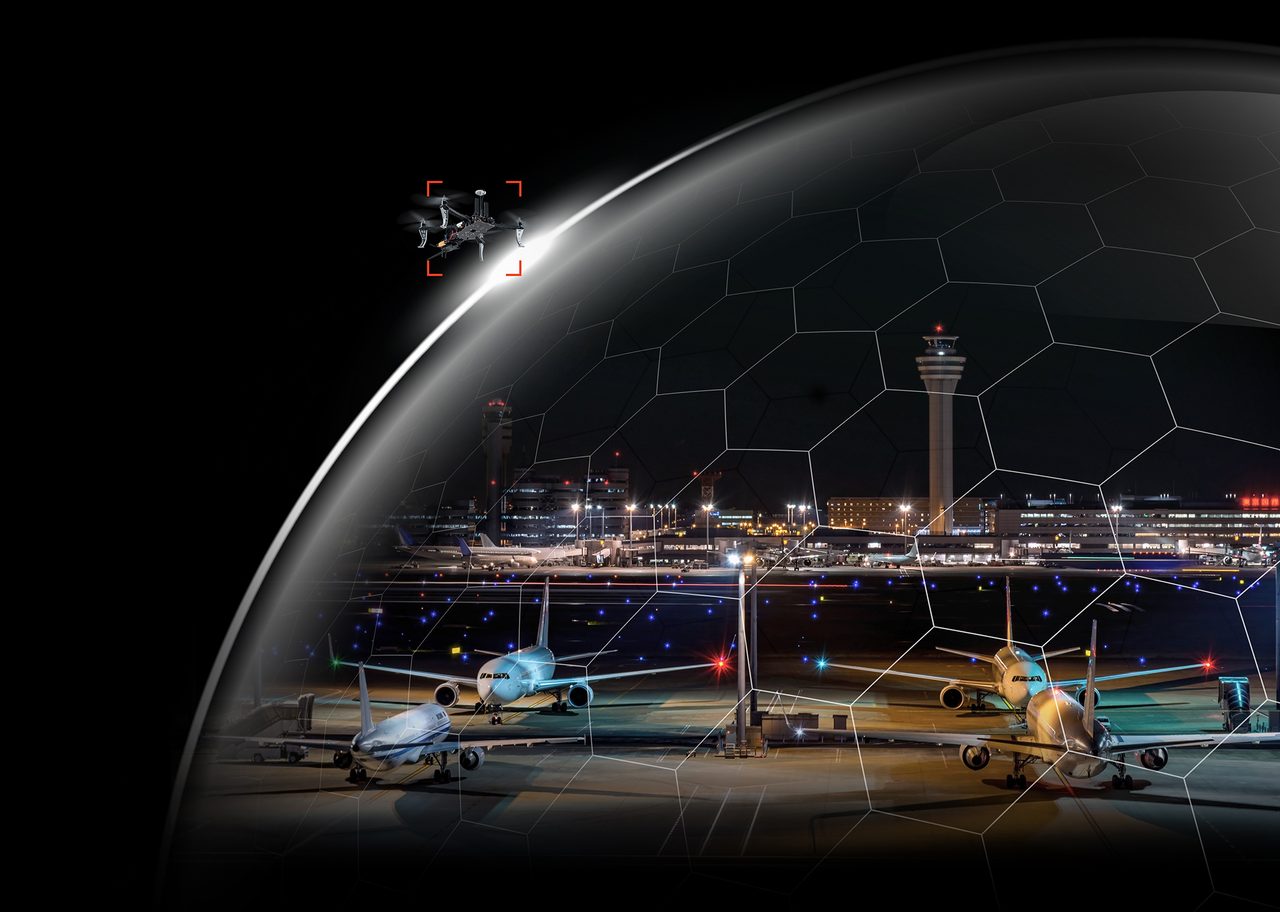
The threat of drones at airports is that they can disrupt or cripple air traffic; crash into passenger aircraft; and smuggle contraband across the perimeter.
IMAGE COURTESY OF DEDRONE
Like the airspace it protects, counter-drone solutions are a big-sky opportunity for security integrators to expand the scope of security services they currently offer further into the perimeter.
By Laura Stepanek, SDM Contributing Writer
Also called counter-drone, counter-UAS, or drone-detection systems, airspace security solutions represent a new sales opportunity for security integrators. As the number of drones increases, so does the risk of not being able to maintain a secure space. Integrators could view airspace as just another part of the perimeter that needs to be secured.
“Unauthorized and nefarious drone activity represents a threat to people, property and information,” says Dan Dunkel, managing director – channel sales at San Francisco-based Dedrone. “This is a new risk vector, and therefore an opportunity that physical security integrators must address to protect their customers.” Before joining Dedrone, Dunkel worked as managing director of PSA Security Network’s Managed Security Service Provider (MSSP) Program, which has a partnership with Dedrone.
Dunkel says that securing low-altitude airspace is a logical extension of the physical security perimeter for integrators to embrace. He describes circumstances in which threats can fly over access control systems, manned guard deployments, and video surveillance line-of-sight — and essentially nullify those defenses. “Integrators have a unique opportunity to answer airborne threats by extending their services and support to customers by a deploying a counter-drone solution. Airspace security provides integrators with a significant revenue opportunity for years to come,” he says.
A report titled “Counter-Drone Systems” by Arthur Holland Michel, from the Center for the Study of the Drone at Bard College, Annandale-on-Hudson, N.Y., states that the counter-UAS (C-UAS) industry has grown exponentially in recent years. In 2018 the center identified more than 230 C-UAS products produced by 155 manufacturers in 33 countries.
What is spurring the progress? “The rapid growth and proliferation of drone adoption is creating what is, in effect, a new drone economy,” explains Jeffrey Starr, chief marketing officer, D-Fend Solutions, based in Ra’anana, Israel, with offices in McLean, Va.
Alongside this enormous growth in drone applications, however, is a growing set of risks and dangers, Starr says. Commercial drones are becoming more compact, faster, more durable and harder to detect. Many can fly long distances, carry heavy payloads, and are easy to operate. “These factors pose safety and security risks to nearly every type of urban or sensitive environment. This, in turn, has generated huge demand for airspace security systems, most notably in counter-drone systems and services.”
As evidence of the potential opportunity this market holds, Starr cites market research firm Drone ii, which measures just the global counter-drone portion of the airspace security market to grow to $6.6 billion by 2024, at a 41 percent annual growth rate.
DroneShield’s RfOne mobile trailer is deployed by a U.S. state law enforcement agency. DroneShield systems are available on an outright-sale or lease basis.
IMAGE COURTESY OF DRONESHIELD
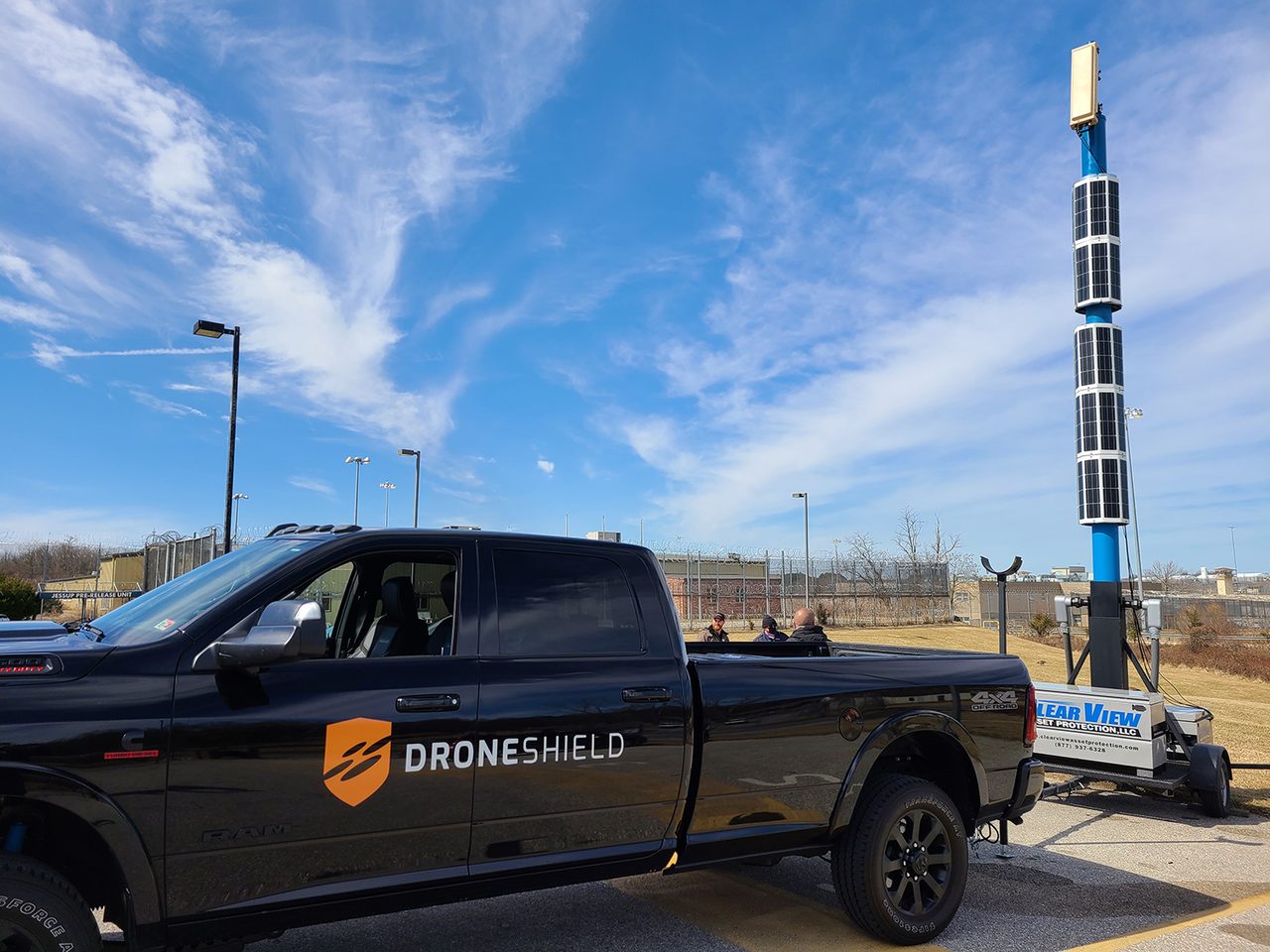
“Drones are a highly efficient surveillance and payload delivery tool and are capable of nefarious activities ranging from terrorist attacks to corporate espionage, to breaching privacy, creating general nuisance, and much more,” says Oleg Vornik, chief executive officer of DroneShield, located in Warrenton, Va., and Sydney, Australia. “Drones can also be used in swarming formations — and all of this in highly affordable $1,000 to $2,000 drones, which can be flown by pilots without any prior experience.” DroneShield’s solutions provide “airspace awareness” for drones coming into the airspace around the company’s customers and their premises, he describes.
The drones that are creating the need for airspace security are coming from two fronts, describes Linda Ziemba, founder and CEO of AeroDefense, Oceanport, N.J. “One is the clueless and the careless; the people that don’t know any better than to fly where they shouldn’t be, or the people that know better and just do it anyway. And then there’s the other end of the spectrum — the nefarious — and that can range from corporate espionage to contraband delivery at prisons, to a flat-out terror attack,” says Ziemba, who spoke at ISC East 2021 on the topic.
She explains that the Federal Aviation Administration (FAA) identifies two primary methods of drone detection: radar and radio frequency (RF). Most drones, such as models used by hobbyists, communicate over RF. “The controller on the ground sends up C2 (command and control) instructions to the drone, telling it where to go, which way to turn, how high to fly. And the drone sends information back down to that controller. It could be video or it could be just telemetry information.”
Is There RMR in Airspace Security?
Security integrators may ask what type of revenue stems from counter-drone solutions. Is it a single sale or recurring revenue? Are there any supplementary services that can generate additional income? The answer may be all the above, depending on which manufacturer’s solutions you choose to resell.
A cloud-based counter-drone platform is one model that provides recurring revenue, as in the solutions from Dedrone. “The risk from unauthorized drones underscores the need for an early warning system, providing immediate alerting to first responders,” says Dan Dunkel at Dedrone. “Cloud architectures provide efficient deployments, improved security, and automatic updating. Cloud models also offer subscription services that generate dependable recurring revenues and give integrators the opportunity to layer on additional security services over time.
“While counter-drone deployments are geography-dependent and vary by installation, a rule of thumb is to expect between $50,000 to $70,000 in annual recurring revenues per deployment. Subscription-based continuous service revenues are the future for physical security integrators,” Dunkel explains.
Jeffrey Starr at D-Fend Solutions says counter-drone installations often generate additional recurring revenue opportunities after the original project is completed in the form of ongoing services, support, maintenance, training, updates, expansions, and consulting.
And annual subscriptions for software can be another basis for recurring revenue, says Oleg Vornik at Drone Shield. “There are options to provide regular field support and periodic equipment checks for the end users.”
//
Ziemba’s AeroDefense counter-drone platform detects the presence of a drone’s RF signal based on its characteristics, then puts an icon on a satellite map of the drone and controller’s location. The system can alert in several ways to the presence of drones.
“Our technology will detect the presence of both drones and controllers where they shouldn’t be,” she says. “And it’s important that [integrators] select a system that can detect a controller and the drone — and multiples of those simultaneously,” Ziemba emphasizes. She says that, to the military, a swarm of drones could consist of 100 or more; but to somebody attempting to do something nefarious, like at a prison, it could consist of just two lookout drones and one drone delivering the contraband. “The integrators will want to do their due diligence when looking at these products so that the system they choose can detect all the drones simultaneously,” Ziemba notes.
The EnforceAir High-Altitude Tactical system from D-Fend Solutions is suitable for urban and sensitive environments, covering drones coming at both high and low altitudes. One of its features is a wide-angle, folding antenna specifically designed for installation at high altitudes.
IMAGE COURTESY OF D-FEND SOLUTIONS

Synergies With Traditional Security
Counter-drone applications are not dissimilar to traditional security applications, say professionals in this space. In fact, there are several synergies, including customer requirements and integration with other technologies and platforms.
“Any customer who invested in significant security and privacy measures to stop people from the ground now needs to consider protection from aerial threats,” Vornik says. “This requires a dedicated counter-drone system, which integrates seamlessly into the overall perimeter security approach.”
Vornik thinks counter-drone applications, like fire alarms, are universal. They range from corporations and banks concerned about drones landing on their roofs and conducting a cyber/ransom attack, to industrial espionage at high-tech businesses using drones with cameras and other sensors, to contraband delivery at prisons, to terrorist activity at any number of sites.

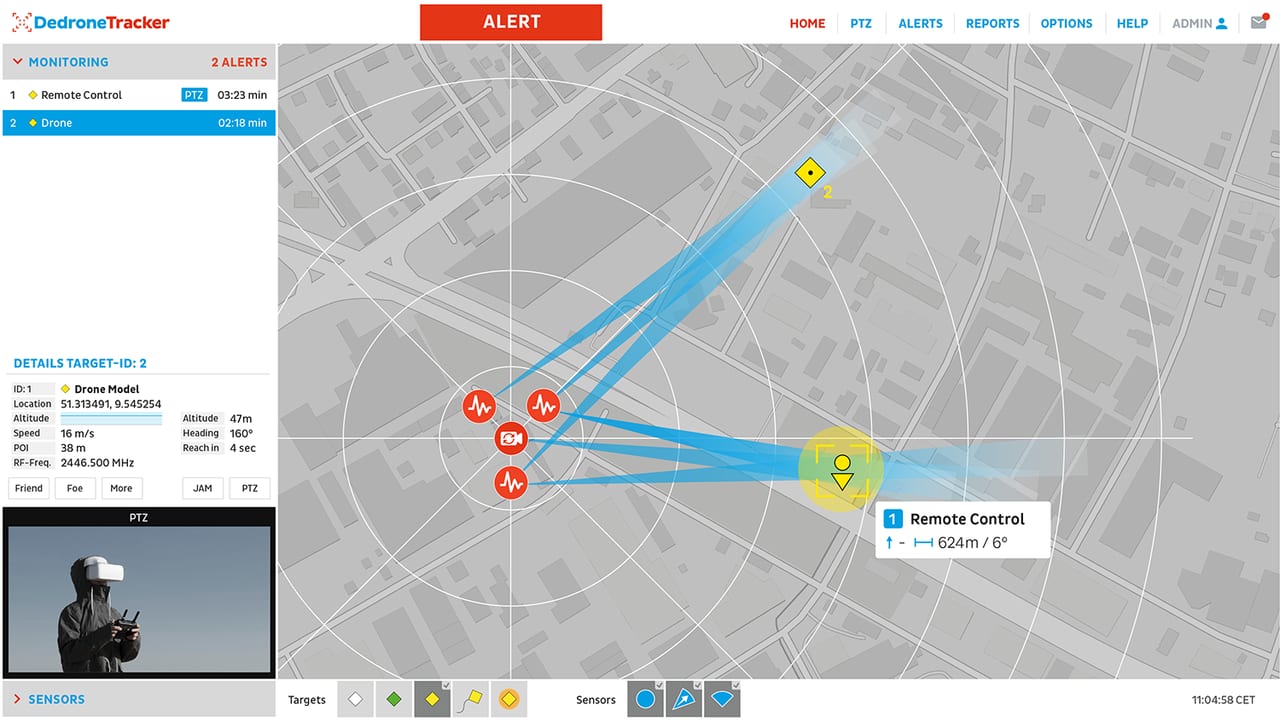
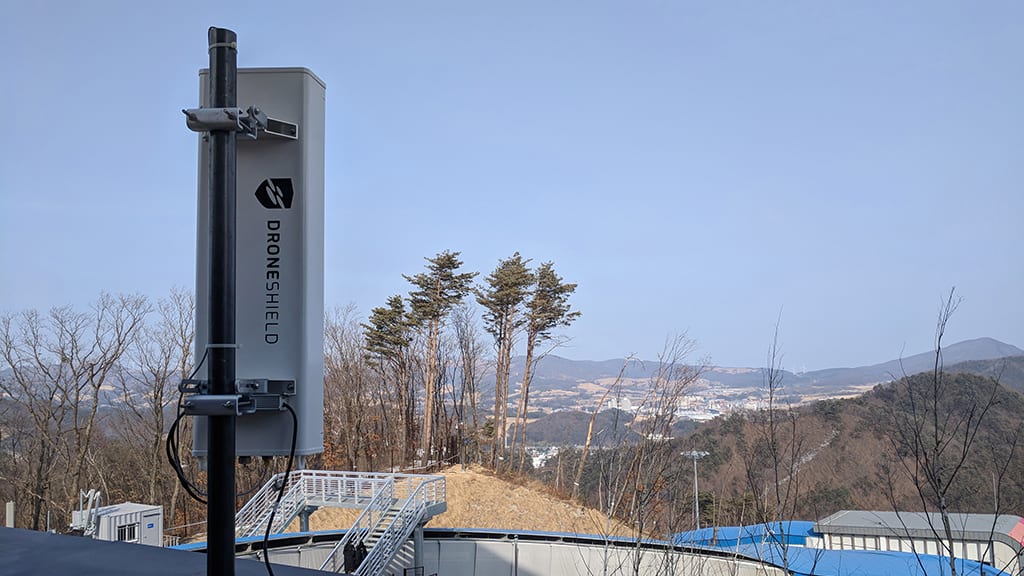
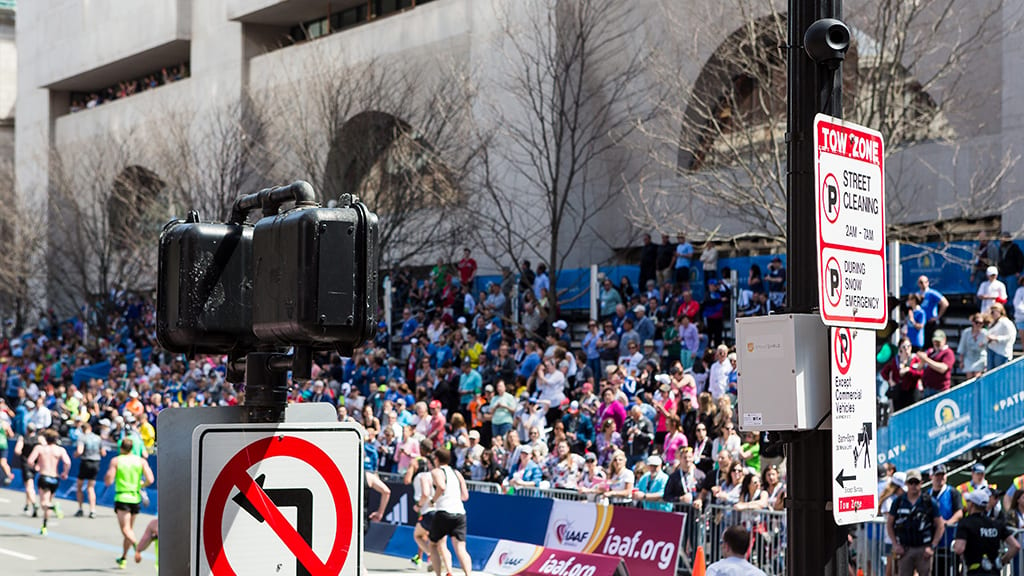
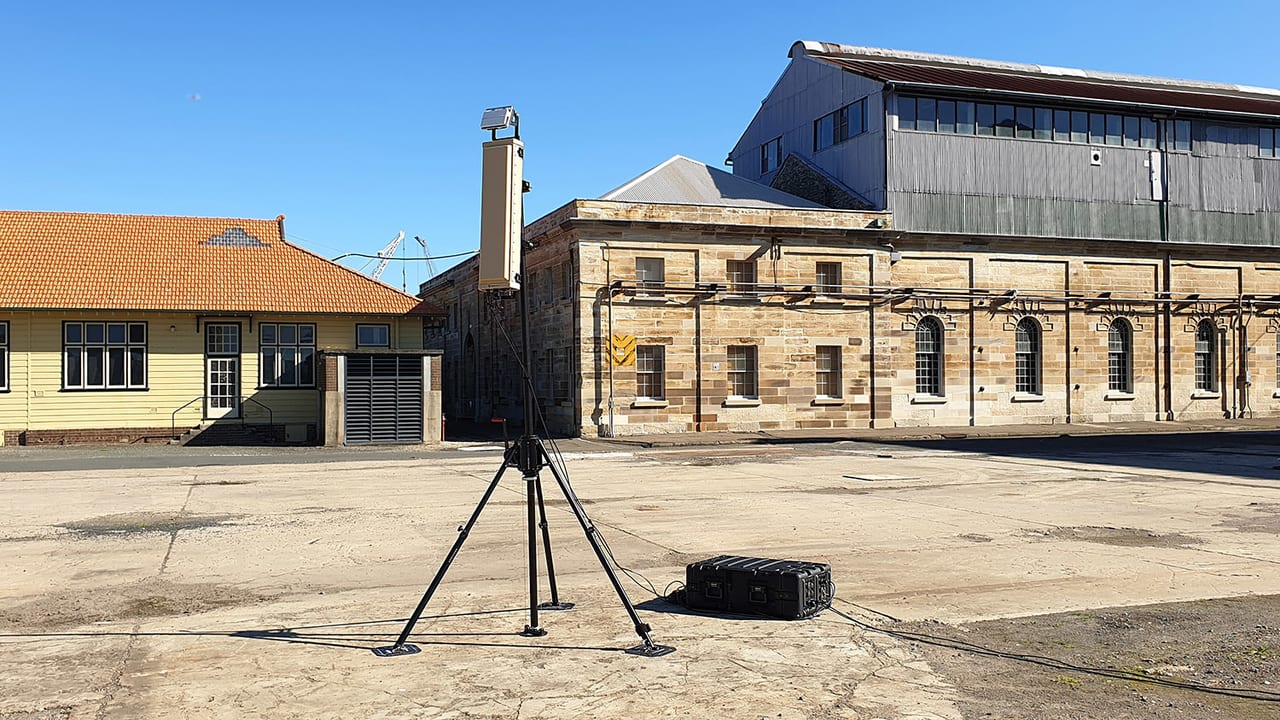
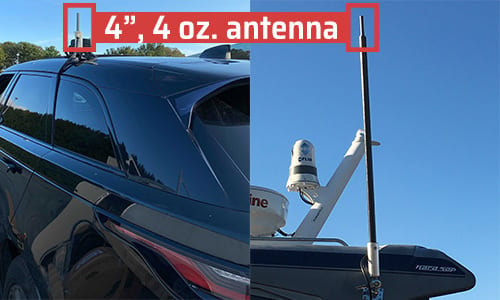


“While some counter-drone products can perform stand-alone, most are designed to be integrated with the broader security solutions already deployed, such as intruder surveillance and other systems — making them logical add-ons for a security integrator,” Vornik says.
As an example of a security integration, Mary-Lou Smulders, chief marketing officer at Dedrone, notes that the company’s airspace security system integrates “easily and naturally” to existing security infrastructure due to its open architecture. “We have proven integrations, for example, with vital alerting systems like Blackberry AtHoc and Everbridge, and existing camera infrastructure. Additionally, pre-designed system analytics enable integrators to implement and continuously improve SOPs as well as articulate the system’s value to the customer, thus also highlighting the integrator’s importance,” Smulders explains.
There are also complementary synergies in systems such as RF detection, RF cyber, radar, acoustic, optical, as well as mitigation system technologies such as RF cyber takeover, jamming, and kinetic systems, Starr describes, all with the aim of building a robust layered defense.
Drones on the Map & Other Resources
If you’re interested in keeping up to date on how drones are being used to carry out illegal activities or cause general mayhem, check out this roster of “Worldwide Drone Incidents” on Dedrone’s website. Each entry shows the incident, industry, location, date, and article link.
For example, “Drug-carrying drone bound for prison lands outside Virginia school,” “Illegal Drone Footage of the Cincinnati Bengals Game,” and “Drone Slams into Building in World Trade Center” are just three of listings from among 27 full pages of reports.
Download a free whitepaper and get deeper insights with the Dedrone Airspace Security Insights Report 2021, titled “11 Trends Driving Airspace Security.”
AeroDefense also has extensive resources on its site, including a page on legality with “5 Questions to Determine if a Radio Frequency Drone Detection System Is Legal & Secure.”
More than a dozen blog posts may provide security integrators with an insightful look at the issues surrounding drones and drone-detection, such as the latest, “10 RF Drone Detection Misconceptions to Leave Behind in 2021.”
//
Discovering Applications & Making the Sale
Some of the largest security integrators have already begun selling counter-drone systems, or are taking a deep look at becoming a reseller, such as Stanley Security. It is currently conducting ongoing and in-depth technical evaluation of Dedrone’s system at the integrator’s headquarters.
“Airspace security is the natural and necessary extension of the 2D version that perimeter security used to be,” says John Skowronski, president of Stanley Security North America, Indianapolis. “Stanley recognizes the threat drones pose from the sky and is proactively working to protect its customers from this new vulnerability.
“Dedrone’s technology will enable the corrections space to get ahead of drone threats, including contraband deliveries and surveillance. It can operate as an extension and critical value-add to traditional perimeter security. Security staff can now intervene quickly and in a targeted manner and stop drone-based illegal activity,” Skowronski emphasizes.
Airspace security systems, especially counter-drone, are suitable for multiple specific sectors and industries across various sensitive environments, Starr says. “The technology and expertise contribute to the security of governmental operations and sites, businesses and enterprises, critical infrastructure, large outdoor events, airports and public institutions, and many other sectors,” he says.
Dunkel points out several immediate market opportunities for counter-drone solution deployments. “Multiple critical infrastructure facilities, including power substations and energy grids, are countering drone activity aggressively. Numerous sporting events including football, baseball, horse racing and NASCAR are all deploying systems to counter drone threats during live events,” he says.
Drones are a new risk vector, and present an opportunity that physical security integrators must address to protect their customers
IMAGE COURTESY OF DEDRONE

The potential customers for counter-drone systems are the people that systems integrators are already dealing with on a day-to-day basis, the people who are buying surveillance systems, Ziemba adds.
“Drone detection is, for the most part, just greenfield,” she says. “There aren’t systems deployed out there. And I think the drone detection market is where the video surveillance market was many years ago, when only a few high-end companies had video surveillance systems. And now, fast-forward 20 or 30 years and everybody has video surveillance.”
Dunkel, who has spent many years of his career working with security integrators, understands the synergies well. He believes that the technology used in counter-drone systems does not present an issue to integrators and that low-altitude airspace security is a logical extension of a security defense perimeter.
“The counter drone discussion is timely and welcome. Public safety professionals are behind the risk curve when it comes to addressing the drone threat and this is a strategic opportunity and first-mover advantage for physical security integrators. Developing a strategic partnership with a counter-drone solution provider is a win-win for integrators and their customers,” Dunkel says. “The sales opportunity is absolutely within the expertise of physical security integrators to address immediately.” SDM

